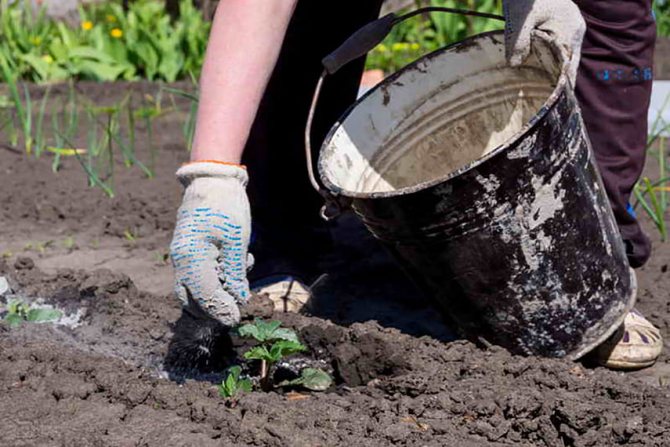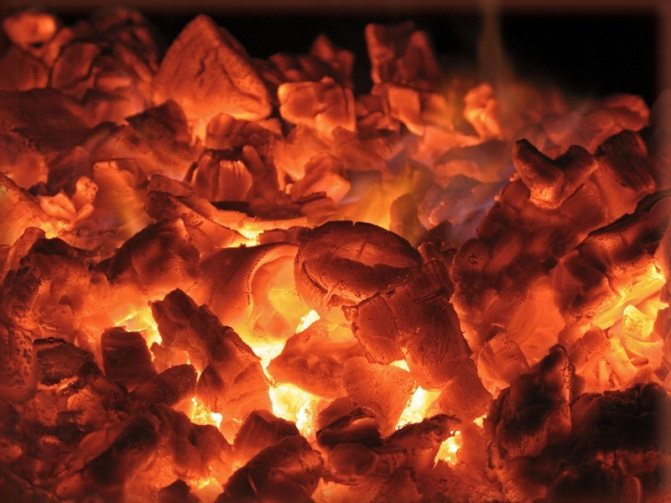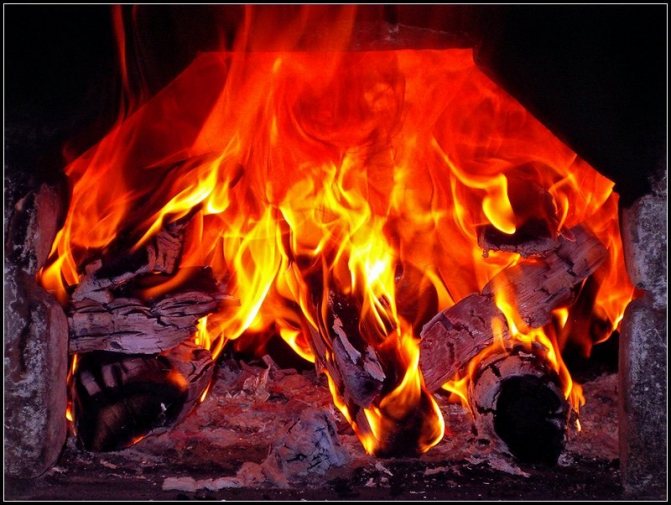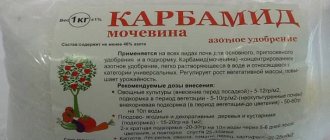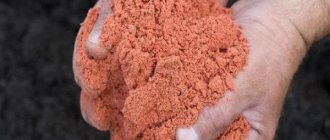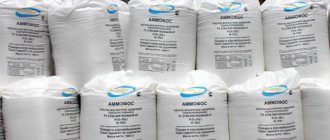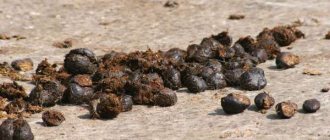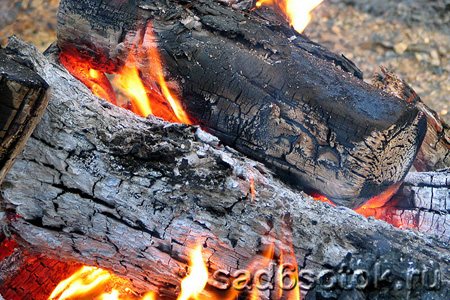
Ash - fertilizer and pest control
When the summer cottage season ends, neat owners put things in order in the houses and on the plots. Bonfires are blazing everywhere, people are burning everything unnecessary. Let's see what's burning there. A broken chair made of lacquered wood, newspapers, pegs with remnants of nylon cords, old synthetic clothes. Where will this ash go? Of course, on the beds, this is an environmentally friendly fertilizer.
Do not repeat the mistake of those who believe that the remains of any fire can be poured under the plant. It is better not to burn household waste at all, why poison the fresh country air? And for plants, so that they develop well and bring maximum benefit, ash must be specially prepared.
Varieties of coal
There are several types of coal, which, to a greater or lesser extent suitable for the prevention of nutritional deficiencies:
- Woody or brown - formed from peat deposits. As part of more than 40% moisture, therefore it is most suitable for fertilizing the soil. The depth is about 1 km, therefore it was not exposed to ultra-high temperatures and easily crumbles.
- Coal - the deposits are located at a depth of about 3 km. Plant residues are dark, almost black in color. The water content inside is about 4%. Seams were formed at high temperatures, therefore they have a denser consistency.
- Anthracite - the most valuable type of coal, which can be mined at a depth of 6 km. Under the influence of high pressure and temperatures without oxygen, the coal masses were packed into very dense layers, which can only be broken with special tools.
Coal ash is rarely used to fertilize the soil. Many people do not even know about this possibility, because they do not heat their homes with coal.
One of the varieties of organic deposits is the mineral leonardite. These are seams that cannot yet be called coal, as they contain more water and organic matter.
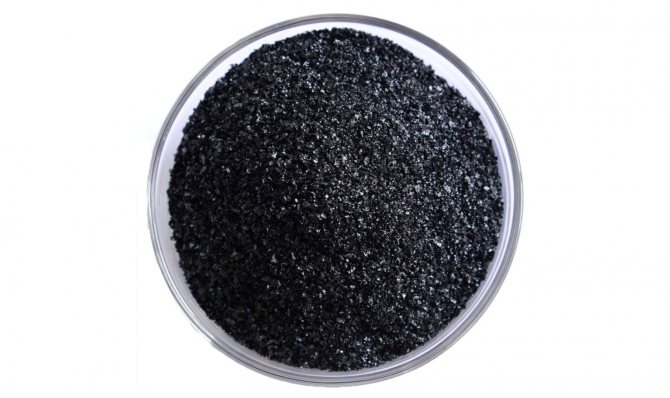

They cannot be called fuel, as they burn weakly. In fact, leonardite is soft brown coal, the initial stage of its formation, although the age is estimated at millions of years.
The main value of such a carbon-like substance is in the high content of humic acids. It is mined and used for the production of humic fertilizers.
Coal Ash Composition and Benefits
The composition of various types of coal contains a large number of trace elements, but the main advantage of coal ash is the high content of humic acids. For example, in brown coal on average there is about 32% of humates, about 25% of nitrogen substances, not counting silicon, sulfur, zinc, manganese, calcium.
Coal ash for the garden is used on sandy soils, poor in humus. Humic acids are substances that are not washed out by water, so plants have the opportunity to feed throughout the entire growing season.
By its appearance, crushed brown charcoal as a fertilizer is a fine fraction, which is mixed with the top layer of the soil. It is used both naturally and after incineration. Charcoal ash is crumbly and easily crushed. Lumps of coal or ash stay in the soil longer and are not washed out until they decompose completely.


On clay soils, coal additives help to make up for the lack of air near the roots of plants, increase the moisture content, since clay hardly absorbs water.
Substance properties
It is worth clarifying that the name coal ash does not apply to substances such as coal and anthracite. The fact is that solid waste is formed during combustion. They are called slag and are simply thrown away.


These are caked, burnt-out residues, which are almost impossible to grind at home. In this regard, wood ash is more profitable, since no effort is needed to prepare the substance.
Charcoal as a fertilizer for the garden can be crushed and scattered over the site. It is soft and easily crushed.
Anthracite or its predecessor - coal as a fertilizer - is best used in the form of dust, or as it is also called - shtyb. This substance is fine, not incinerated, therefore contains all the necessary nutrients and nitrogen.


From the gate turn
Wood ash copes well with many plant diseases and pests. Plantings can be pollinated with ash or treated with a solution.
To scare off slugs and snails, dry ash is scattered over the bed near the plant stems. Will drive away ash and ants (it is enough to sprinkle their paths), and wireworm.
If you find the first signs of gray rot on strawberries, pollinate the berry with wood ash at the rate of 10-15 g per plant. After several such treatments, the rot will disappear.
An effective remedy for diseases such as powdery mildew, keela, black leg, leaf spot, etc., as well as against aphids, fleas, scoops, wireworms, whiteworms and other pests is a mixture of ash infusion with laundry soap (100 g per 10 l) and decoction of herbs.
Cabbage, which grows on a bed fertilized with ash (500 g per 1 sq. M), is less sick with keel and black leg. Gluttonous larvae will not touch the roots of strawberries, if the bottom and walls of the holes when planting seedlings are powdered with a thin layer of ash, then sprinkled with moist earth.
With ash mixed with tobacco dust (1: 1), it is good to dust cabbage, radish, radish, turnip, onions from cabbage and onion flies, cruciferous flea beetles. This treatment has a double effect - both nutrition and protection.
Before planting, it is useful to soak onions for 12 hours in an ash solution: 1 glass of ash per 10 liters of water.
Ashes introduced into the beds when sowing beets protects them from heart rot and tail rot. And the seedlings themselves are then less affected by the rootworm.
Cucumbers, which have been attacked by root rot, must be powdered with wood ash or treated with such a solution: dilute 1 tsp in 0.5 liters of water. copper sulfate and 3 tbsp. l. ash.
To protect the plantings of black currants, gooseberries and roses from powdery mildew, apply under each bush, evenly scattering and shallowly covering, 200-300 g of wood ash.
Macro and trace elements - their effect on plant immunity and yield
Coal contains the following nutritional components, which benefit the plants:
- phosphorus in quantity 0,2%;
- potassium 0,2%;
- calcium 3,5%.
Phosphorus influences the formation of the root system, ensuring the absorption of other nutrients. To dissolve it, a slightly acidic environment is needed, otherwise phosphates combine with other elements and become inaccessible to the roots.
Potassium is an element of fertility. Responsible for flowering and ovary formation. With a lack of potassium, the plant can shed flowers or already appeared fruits. To feed the plants, you can apply coal dust, crumbs or coal ash as fertilizer.
Copper is found in a natural substance that has not been burned. For plants, it is a powerful defense against fungal infection. Iron, molybdenum promote chlorophyll synthesis and prevent chlorosis. Boron and calcium are metabolism boosters. Thanks to them, plants gain green mass faster, and the fruits ripen. 2 - 3 weeks earlier.
The fact is that carbonates dissolve for a long time. Therefore, they are introduced into the soil 1 time in 3 years - in the same way as phosphate rock, obtained from minerals. An acidic environment is needed to dissolve calcium carbonate. At the same time, this does not have a negative effect on humic acids - they are acid-resistant compounds.
Video: Villagers on the use of coal ash in the garden
In alkaline soil, coal fertilization is ineffective, since by its very nature it is alkali. To deoxidize the soil, dust or fine crumbs are used. It is important that the soil is constantly moist, as the soil microflora will not be able to function.
When ash is useful as fertilizer
What ash is, is obvious to every person, even very far from stove heating and gardening. Another thing is that, firstly, not any ash will be useful as fertilizer, and secondly, not all soil will be improved by the introduction of this particular substance.


When using ash as fertilizer, it is important to consider that:
- The ash must be clean.
Ash purity means that it is obtained from the combustion of one type of wood or other plants and does not contain residues of any other substances such as paint, plastic, tin and others.


It is impossible to accurately calculate the composition of ash obtained from burning together different wood and plant residues, and therefore, use it for the intended purpose for the benefit and health of a particular type of plant. If, say, beer cans and bottles were burned simultaneously with the tree, then such ash is completely dangerous both for the plant itself and for its future fruits, and, consequently, human health.
- Ash neutralizes medium acidity soil.
Considering that ash is nothing more than an alkali, and is an excellent soil deoxidizer, it is worth adding it to the soil with a pH value below 7 and no more than once every three to four years.
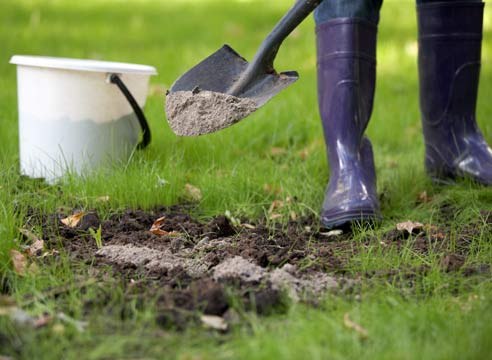

The easiest and cheapest way to determine the acidity of the soil is with the help of special strips of litmus paper and a scale on their packaging. The entire kit can be purchased at a chemical store. If this method is unavailable for some reason, then you can use popular advice for determining the acidity of the soil.
How different types of soil react to feeding with ash
On chernozems, where the amount of humic acids is high, there is no particular need to use ash or natural coal. Such fertilization is more useful on sandstones, sandstones, loams and clay soils.
Podzolic soils, where the acidity level is high due to the use of mineral complex fertilizers, can be healed and prepared for the cultivation of cultivated plants. It will take about 2 - 3 years. Parallel to coal ash, green manure, compost, wood ash can be used.
What plants are coal or wood ash used for?
Wood and coal ash are used to feed garden plants that prefer a slightly acidic or neutral soil reaction. Wood residues can be found anywhere - they are obtained by burning branches after spring pruning, and the leaves can be harvested annually.
Finding coal or charcoal is another matter. The stores sell prepackaged briquettes for barbecues - you can use them. This fertilizer is inexpensive, so it is available in any quantity. After being used outdoors, the remains of the charcoal can be collected and scattered in the garden.


When transplanting indoor flowers, crushed coal is added to the bottom or mixed with soil for aeration in a pot. The organic matter gradually dissolves and nourishes the flowers.
Due to the high content of carbonates, top dressing has an effect on the metabolism of vegetables and berry crops. Calcium promotes the formation of dense cell membranes, enhances the turgor of leaves and stems.With a deficiency, the tops of the plants turn white and die off, since ions are not transferred from the old parts to the young shoots.
How to get a high yield of grapes on ash top dressing
To form a strong vine requires a large amount of nutrients - macro and micro. Grapes are pruned annually, so some of the trace elements are lost. They need to be applied back as fertilizer.
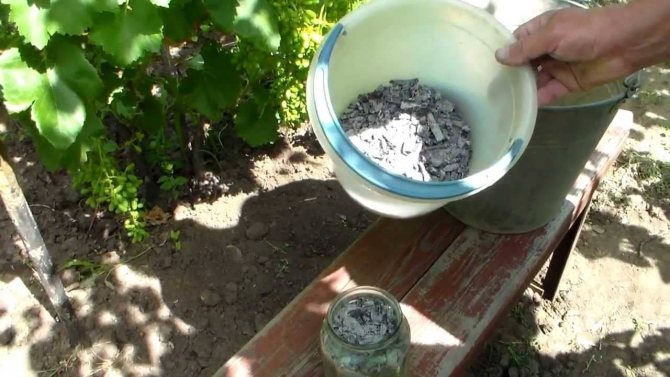

For this, wood and lignite ash can be used. It is brought in by irrigation, insisting the ashes on the water for about a week, or dry matter is embedded in the area of the root system, after which it is watered abundantly. The procedure is performed in the fall or when planting new cuttings. Nitrogen is additionally required, since it is absent in the ash.
Individual approach
In a daily ash solution without sediment (20 g per 1 liter of water), the seeds are soaked for 4-6 hours before sowing. Such a "font" is especially useful for eggplants, cucumbers, tomatoes.
Each culture has its own attitude to ash. When planting seedlings of cucumbers, zucchini, squash, add 1-2 tbsp. l. ash in the hole. For sweet peppers, eggplants and tomatoes, the rate is increased to 3 tbsp. l.
Ash is also used for fertilizing vegetable crops (1-1.5 cups of ash are taken per bucket of water). The mixture is thoroughly mixed and poured into a recess made near the plants, which is immediately covered with earth. It is good to alternate such ash feeding with nitrogen-containing infusions of mullein, bird droppings or slurry.
Ash applied to potatoes is much more effective than any other potash fertilizer. Two matchboxes of ash, added to the hole before planting, can increase not only the yield of the bulb, but also increase the starch content in the tubers. You can "powder" potatoes with ash and just before planting - 1 kg per 30 kg of tubers. Or make it when hilling: at the first - 1-2 tbsp. l. under each bush, with the second (at the beginning of budding) - up to 0.5 cups for each plant. With such a top dressing, excellent potatoes will grow. Even the Colorado beetle will be too tough!
They will be thanked for the ash "cocktail" and fruit crops. It is best to embed ash or an ash solution (2 glasses per bucket of water) into the soil to a depth of at least 8-10 cm. Left on the surface, it will accelerate the formation of a soil crust harmful to plants and microflora.
Very responsive to wood fertilization in planting pits and tree trunks of cherries and plums. Be sure to feed them with ash every 3-4 years. They react well to ash and black currant bushes - 3 glasses for each plant.
The result from the ash brought under the trees and bushes will be much better if you use it in a mixture with peat: both the soil will be fertilized and the soil will deoxidize.
